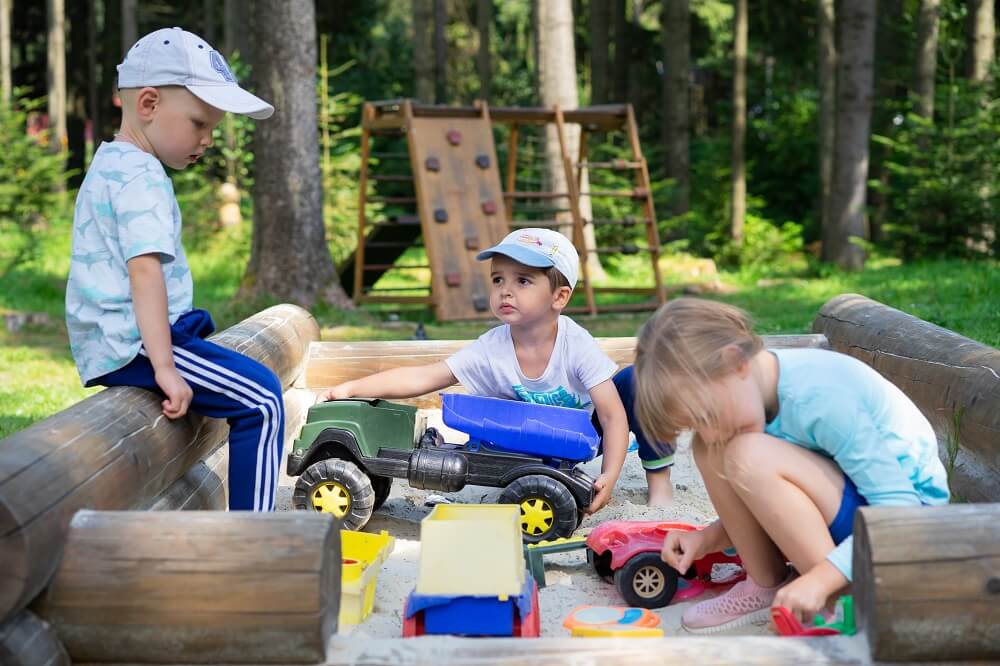Parenting tips for blended families
Key points:
- It’s important to pace yourself and set realistic expectations when merging two families.
- Every child is different, but older children (ages 10 to 14) typically have the hardest time adjusting to a new family environment.
- There are several things you and your partner can do to build trust and connection as a blended family.
Blending families can be challenging and messy. Some days it feels like navigating a minefield. But it can also be a deeply enriching experience, from connecting with your stepchild to creating new family traditions together.
Here’s what you need to know for your blended family to flourish.
What is a blended family?
A blended family is ‘born’ when you or your partner have children from a previous relationship and you decide to combine your lives. Blended families are also known as stepfamilies (or sometimes ‘bonus families’), and they’re increasingly common.
Two things every new stepparent should keep in mind
If you and your partner are about to merge households, it’s important to go into it clear-eyed. Blending families is hard work – to succeed, you’ll want to do two things right up front:
Pace yourself
According to the American Psychological Association, it can take 2 to 4 years for a new stepfamily to get fully used to life together.
Set realistic expectations
If your kids (or your partner’s kids) struggle to adjust, don’t panic. It’s important to manage expectations. For example, you may not have a memorable, made-for-TV bonding moment, but you can get to a place where everyone treats each other with respect. The connection will grow in its own time.
Bottom line: give yourself, your partner and children plenty of time to get comfortable with each other and establish new family routines.

Common problems facing blended families
Not everyone adjusts to a new family dynamic at the same pace. You may find yourself dealing with one or more of these common challenges as you go:
Your stepchildren don’t warm to you right away.
Your biological kids are slow to bond with your partner.
A child refuses the presence of a new authority figure.
Step siblings don’t get along, there is jealousy amongst them, or they compete with each other for attention.
Partners bring different parenting styles to a blended family or discipline strategies to the relationship, and this can create inconsistency in parenting, and conflict between family members.
All of these challenges are normal and to be expected. With a few blended family tips we’ll get to in a moment (and a heap of patience), you’ll be able to navigate each one like a pro.
How blending families affects children by age
The way children respond to becoming part of a blended family can vary by age. While each family is different, here’s a general idea of what to expect.
Younger children (<10)
Young children often have an easier time than older kids adjusting to a new family environment or accepting a new authority figure in the house. As long as you treat them with care and respect, you may find they’re more comfortable welcoming a new parental figure into their lives.
Older children (10 to 14)
According to the American Psychological Association, kids aged 10 to 14 have the hardest time adjusting to a new stepfamily. That’s in part because they still need a lot of care and support, but they’re also trying to establish their own identity. Don’t panic if it takes longer to build trust and connection with an older stepchild.
Teenagers (15 and up)
Teens can be more of a wild card: they can experience strong emotions, positive or negative (or both), in response to families blending. They’re also at a point in life where they’re seeking more independence. Look for shared interests you can use to build a connection, whether it’s sports, music, food or a TV show you both like.

6 tips for blended families to successfully work as a team
1. Plan ahead with your partner
Decide together how you’re going to parent your children. If you’re both bringing children into the relationship, you may need to adjust your parenting styles to better fit each other’s. It’s better to make these adjustments before moving in together, if possible.
2. Let your stepchild set the pace of the relationship
If they’re not ready to show you affection, don’t force it. Try offering a high five or a pat on the back if they’re not comfortable with a hug just yet.
3. Let the biological parent take the lead on discipline, especially to start
The American Psychological Association suggests you prioritise building trust with your new stepchild in the early days – and leave most of the discipline to the biological parent. Your relationship with your stepchild at this point should be more like that of a friend or guide.
That doesn’t mean you should parent separately. Both you and your partner need to play an active role in your kids’ lives. You should agree on a consistent approach to rewards and discipline for all children. Different (or inconsistent) approaches can understandably feel unfair to kids, and they usually cause tension or conflict.
4. Don’t compete with the child’s other biological parent
Your stepchild may worry that building a good relationship with you means they’re somehow being disloyal to their other biological parent (that is, your partner’s ex). It doesn’t. If the opportunity comes up, reassure your stepchild that you could never replace their biological parents – and you’d never try to.
5. Set family rules together
Come up with a clear set of guidelines for everyone to follow, with clear (and natural) consequences when family rules are broken. Your rules should be specific so they are easily understood – for example:
We agree to speak kindly and respectfully to each other.We agree to keep our hands and feet to ourselves.We agree to eat at the table and clean up after ourselves when we’re done.
Be sure to include the kids when coming up with family rules, so they have a greater sense of ownership.
6. Establish fun family routines and traditions
Nothing helps build family ties like shared experiences. Establish some fun, new family traditions and routines that everyone can enjoy. Talk with your children to get ideas of what they would like. Winning options include:
- Friday pizza dinners
- Movie nights
- Weekend visits to some place you all enjoy, like the beach or a favorite park.
Don’t limit these family traditions to special occasions. You can also establish simple, everyday routines like eating meals together whenever possible.
Blending families isn’t easy, but it can be profoundly rewarding – especially when you approach it with the right mix of patience and persistence.
Want to learn more?
Movember launched Family Man to improve the confidence and mental health of dads.
Learn how to master kick-ass parenting strategies by getting started with Family Man. It’s an interactive parenting video series that's expert-backed and funded by Movember.
If research is your thing take a closer look at the evidence behind Family Man.
Or learn more before diving in.